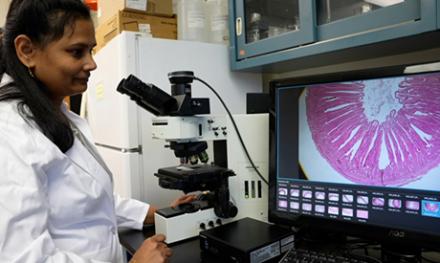Women Play Leading Role in Ag Science

The United States began honoring women’s history in 1980, but ARS has a long tradition of celebrating the role of women in science. Women have been leading cutting-edge scientific research for decades, and many have been enshrined in the ARS Science Hall of Fame.
Here are just a few examples of current women working in ARS projects:
Beth Newingham is a research ecologist at the ARS Great Basin Rangelands Research unit in Reno, NV. Newingham is studying rangeland restoration after wildfires in the Great Basin.
Tracy Leskey, entomologist and director of the ARS Appalachian Fruit Research Station in Kearneysville, WV, is leading research into controlling the invasive brown marmorated stink bug, a major pest of many key crops.
Soheila Maleki is a research chemist with the ARS Food Processing and Sensory Quality Research unit in New Orleans, LA. She is searching for a treatment for peanut and tree nut allergies.
Revathi Shanmugasundaram is a biologist at the ARS Toxicology and Mycotoxin Research unit in Athens, GA. Shanmugasundaram is conducting research into whether mycotoxins in poultry feed could predispose chickens to fatal disease, even at low levels.
Hannah Rivedal is a plant pathologist at the ARS Forage Seed and Cereal Research unit in Corvallis, OR. She is working with scientists at Oregon State University and other institutions to help growers fight diseases of hemp and mitigate the damage they cause.
Emily Watkins de Jong is a biological technician conducting research into honeybee nutrition and health at the Carl Hayden Bee Research Center in Tucson, AZ.


